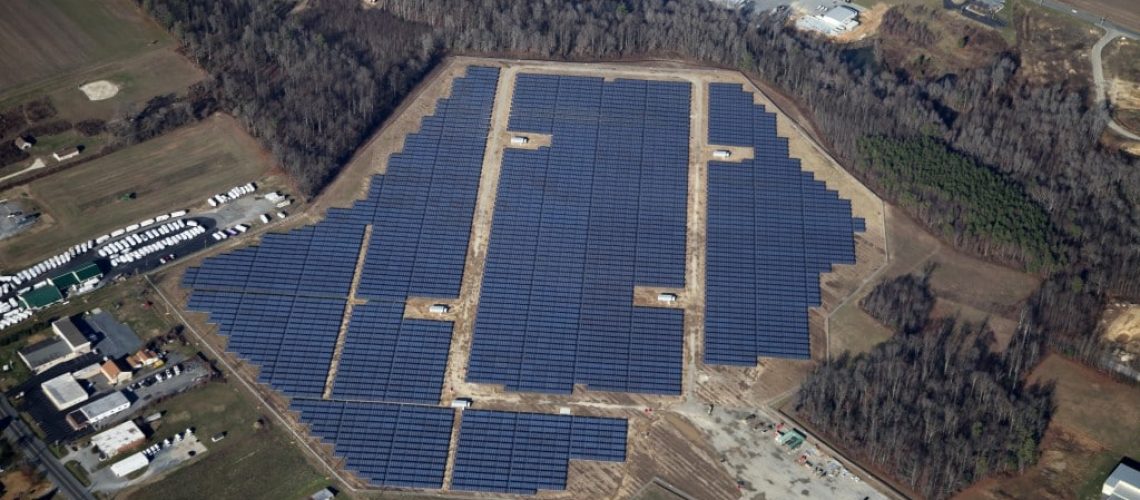The second smallest state in the nation is not known for large-scale solar installations, but the tide is slowly turning.
The pv magazine USA tour of solar incentives now takes us to the South-Atlantic region, with the first stop in Delaware, the second smallest state in the nation. While it is the sixth least populated state, it is also the sixth most densely populated state. Delaware is home to the Institute of Energy Conversion at the University of Delaware, founded in 1972 and believed to be the oldest continuously operating solar research institute in the world.
Delaware is currently ranked 41st in solar installations in the country, according to the Solar Energy Industries Association. That’s down from 37th in 2021. Less than 5% of the state’s electricity is derived from solar, and SEIA’s growth projection is for only 341 MW installed in the next five years, dropping the state further to 44th.
Last year the Governor signed a bill boosting the state’s renewable portfolio standard to 40% by 2035, with 10% required to come from solar. When the bill passed, the Sierra Club welcomed the increased RPS, but the group argued the new 40% target was too low and left Delaware “behind virtually every state in the region,” most of which have targets 50% or higher.
To meet the new RPS, two Delaware utilities are offering incentives for customers to add solar. Delmarva Power offers a cash rebate of $0.70 per watt of solar generating capacity installed up to 50 kW, to a maximum of $6,000. Delaware Electric Cooperative offers customers $0.50/W of solar power installed (up to 5 kW), and $0.20/W for any additional solar capacity.
Net metering
The state currently has some strong solar incentives in place, in addition to the federal investment tax credit of 26% for the cost of equipment installed. Delaware’s net metering law allows third-party solar financing and offers a full retail rate for net metered electricity, meaning that homeowners receive the same rate for their excess solar-generated electricity that homeowners pay the utility for grid-supplied power.
Community solar
Community solar has been approved in Delaware since 2010, but a bill signed into law in September 2021, expands access to community solar projects. SB 2 increases the maximum size of systems to 4 MW, requires that each system owner to certify that at least 15% of its customers are low-income, eliminates the requirement that all customers be on the same distribution feeder, and more.
Low- to moderate-income programs
In addition to the requirement for low-income customers to have access to community solar, the Delaware Department of Natural Resources and Environmental Control (DNREC) recently announced the launch of a two-year pilot program for low- to moderate-income households, offering free solar panels or cost assistance, depending on eligibility. Low-income households must first apply for installation services through the DNREC’s Weatherization Assistance Program, a cost-free program that improves residential energy efficiency through weatherproofing and other home improvements. Homes that qualify can receive a free solar installation of up to 4.0 kW. Moderate-income households can receive a solar installation 70% covered by the assistance program, and 30% is paid by the homeowner, for systems up to 6.0 kW in capacity.
A complete list of solar incentives available to Delaware residents can be found here.
Notable installations
Delaware’s largest solar installation is the 15 MW Milford Solar Farm. Commissioned in 2012, it generates 21,000 MWh of electricity or enough to power 9,000 households, offsetting 12,000 tons of carbon dioxide emissions (CO2) a year. The project is owned by PSEG Solar Source and the electricity is sold to Delaware Municipal Electric under a 20-year power purchase agreement. The project includes 30 ABB inverters and 62,000 Canadian Solar modules on fixed-tilt racking systems. Juwi solar is the contractor and provides EPC services.
The longstanding Milford project is about to be eclipsed by two much larger installations: the 114 MW Cedar Creek Solar Project in Townsend and the 50 MW Raceway Solar Project in Harrington. Both are currently under construction by Freepoint Solar.
Last time, the pv magazine tour of the 50 states of solar took us to neighboring New York, and next we will continue to travel through the South-Atlantic region.






